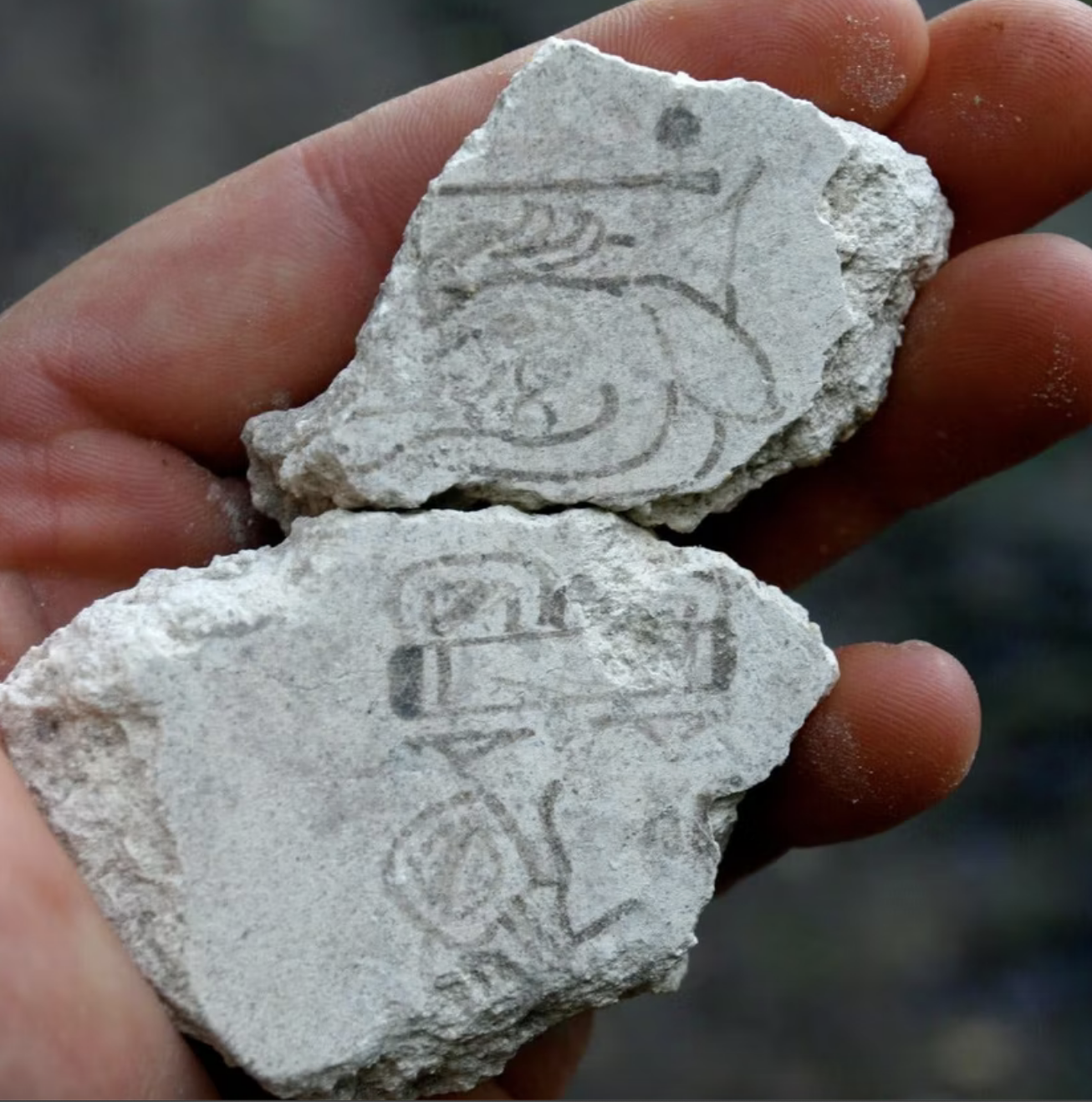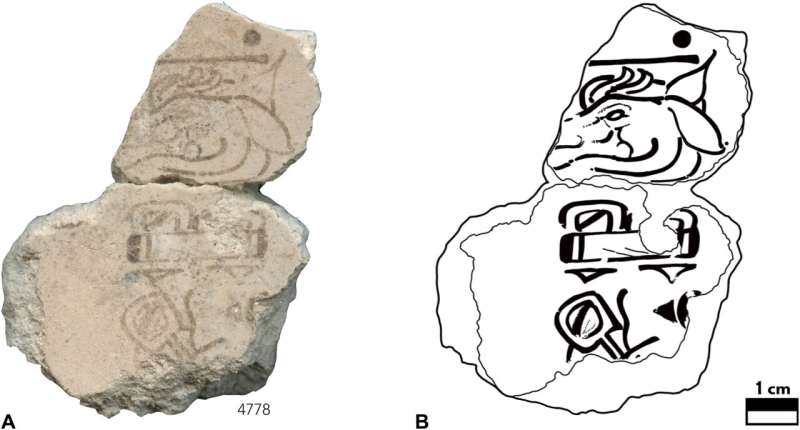Fri 15 April 2022:
Researchers David Stuart from the University of Texas at Austin, Heather Hurst and Boris Beltrán from Skidmore College and independent scholar William Saturno report the earliest evidence of a Maya sacred calendar in Guatemala.
In their paper published in the journal Science Advances, the group describes their work, which involved sifting through painted mural fragments at the Las Pinturas pyramid complex in Guatemala, and how they found the calendar.

The two fragments depicting a Maya calendar date. (Karl Taube, courtesy of the Proyecto Regional Arqueológico San Bartolo-Xultun)
The Las Pinturas pyramid complex is located near San Bartolo and has been the site of excavation for a number of years. Prior research has shown construction at the site began 2,300 to 2,200 years ago and that the pyramids at the site were built in multiple phases. As each phase of the project was completed, parts of the old structure were knocked down.
As the pyramids grew in size, the pieces of the knocked-down structures remained hidden inside, providing a timeline of sorts of the construction of the complex. In this new effort, the researchers found the calendar fragments while sifting through the pieces of a wall, decorated by the Maya of that period, that had been knocked down. Dating of charcoal fragments—found in the same layer of debris as the wall fragments—showed them to be from approximately 300 and 200 BCE, making them the oldest known samples of a Maya sacred calendar.

Detail of fragment #4778 collected from the Sub-V phase (~300 to 200 BCE), with the 7 Deer day sign.Consolidated mural fragment #4778 in black-line style, collected from the Ixbalamque structure: (A) the digital scan and (B) the illustration depicting the 7 Deer day sign and two hieroglyphic signs in a vertical column. Scans by Heather Hurst and illustration by David Stuart. Credit: Science Advances (2022). DOI: 10.1126/sciadv.abl9290
The Maya calendar was based on the 260-day divinatory calendar that is still used by some people in parts of Mexico and Central America today. It was used by a number of people across Mesoamerica. In their work, the researchers found two pieces of wall debris that fit together. The markings included symbols that are known to have been used to represent a date symbol—a dot over a line above a deer head. It is known as “7 deer” and represents one of the days in the 260-day calendar. The researchers suggest the artwork shows maturity, which, they contend, indicates that the calendar had been in use for many years.
Article Originally published in PHYS Click here
___________________________________________________________________________________________________________________________________________
FOLLOW INDEPENDENT PRESS:
TWITTER (CLICK HERE)
https://twitter.com/IpIndependent
FACEBOOK (CLICK HERE)
https://web.facebook.com/ipindependent
Think your friends would be interested? Share this story!





